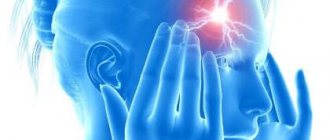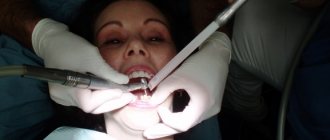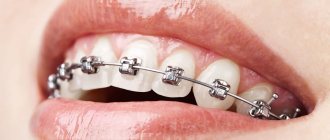Many people ask what an orthopedic surgeon does, or what an orthopedic surgeon treats. Orthopedic doctors use both surgical and non-surgical treatments to treat musculoskeletal disorders, which include sports injuries, spinal disorders, degenerative diseases, infections, tumors and congenital disorders. In this article, we will answer these questions and clearly show what orthopedic doctors do in detail. There are many surgical and non-surgical treatments that the surgeon/orthopedic doctor uses to relieve a patient's pain and here we will briefly review these treatments. After answering the questions “who is an orthopedic surgeon/doctor?” and “what does a surgeon/orthopedist do?” We will check surgical methods and non-surgical treatment methods in detail. These topics and techniques include: arthroscopy, fusion, internal fixation (implant fixation), joint replacement, osteotomy, soft tissue reconstruction, injections and pain management. These topics practically cover all the activities that an orthopedic doctor does to treat a patient's painful part of the musculoskeletal system of the body.
Who is an orthopedic doctor?
An orthopedic physician is a physician's specialist in the diagnosis, treatment, prevention and rehabilitation of disorders, injuries and diseases of the body's musculoskeletal system. The musculoskeletal system includes bones, nerves, joints, ligaments and tendons. In other words, when you have pain in your hand and wrist, foot and ankle, knee, shoulder and elbow, neck, back and hips, you should see a podiatrist. Orthopedic doctors use both surgical and non-surgical means to treat the musculoskeletal system of your body. Non-surgical treatment may include the use of medications, exercise and other types of rehabilitation or alternative treatments. Orthopedic doctors are specialized to treat all aspects of the musculoskeletal system, however many orthopedic doctors specialize in specific areas, such as the arm, shoulder, elbow, spine, hip, knee or foot and ankle.
What is your first appointment with an orthopedist like?
Initial consultation includes the main stages.
- Getting to know the patient, studying his outpatient card, assessing complaints and general condition.
- Visual inspection and assessment of movements of large and small joints, as well as the spinal column along its entire length.
- Detection of anomalies and deformations of the musculoskeletal system.
- Drawing up a plan for further examination, as well as making a preliminary diagnosis.
For a follow-up appointment with a doctor, patients come with the finished results of instrumental examinations (images, laboratory tests). Based on diagnostic data, as well as information obtained as a result of a repeated examination, the doctor makes a final diagnosis and forms a comprehensive treatment plan.
A doctor examines a patient who has previously undergone surgery on structures of the musculoskeletal system. Evaluates the effectiveness of the operation, the presence of contractures, instability and draws up an individual rehabilitation plan. There is a separate schedule of visits to the orthopedist in the postoperative period, which allows you to monitor the patient’s general condition over time.
What does an orthopedic doctor do?
Musculoskeletal pain is the main reason why people visit doctors every year. There are many musculoskeletal conditions and injuries that can cause pain, and often orthopedic doctors can help reduce or eliminate the pain. As you may know, orthopedic doctors treat broken bones and replace painful joints, but they also treat patients with problems such as:
- Sports injuries
- Back pain, ruptured discs and spinal stenosis
- Bone tumors
- Carpal tunnel, hand arthritis and hand injuries
- Club foot, nasal and hip dysplasia
- Orthopedic trauma
- Limb lengthening
- Achilles tendon injuries, joint injuries and foot and ankle injuries
- Osteoporsis
- Arthritis
As you can see, orthopedic doctors repair torn tendons and ligaments, as well as treat sprains and sprains. They may also deal with fractures and dislocations. They often counsel patients on how to strengthen weakening muscles and perform surgeries. Some of these surgeries repair broken bones and soft tissue, while others correct birth defects and injuries that develop due to disease or infection. But what orthopedic doctors do is not limited to these subjects. What does an orthopedic surgeon/doctor do? Here's the short answer:
- arthroscopy : a process using a camera to visualize inside a joint
- Fusion : A process using internal devices or rods in which bones are fused together.
- Internal fixation : holding broken pieces of bone together with plates, screws, or pins.
- Joint Replacement : A process in which a damaged joint is removed and replaced with an artificial joint, partial, complete, or augmented.
- Osteotomy : Correction of bone deformities by cutting and repositioning the bone.
- Soft tissue repair : repair of tendons or ligaments.
- Injections and pain relief. In this list you can find a short answer about each activity. As you can see, there is not much detail here, and the tasks and activities of orthopedic doctors are not limited to these subjects.
When should you see an orthopedist?
Often, adults who have serious problems with the musculoskeletal system turn to an orthopedist because they initially did not pay attention to the symptomatic manifestations of developing diseases. This is not surprising, since diseases of the skeletal and muscular system initially have mild symptoms, and only an experienced doctor can diagnose the problem at an early stage.
Timely stopping of degenerative processes is possible with an adequate attitude to the “signals” that the body “gives” in the presence of any problems. If you experience any of the symptoms listed below, a visit to your podiatrist is highly recommended.
- Relatively quick fatigue of the lower extremities with light loads;
- Pain in the joints;
- The appearance of a constant/periodic crunch when bending the limbs in the joints;
- Deformation of the chest bones;
- Inability to stay in an upright position (standing) for a long time;
- Asymmetrical shoulders;
- Deformation of the limbs (appearance of neoplasms in the form of growths/bumps, curvature of the fingers);
- Inflammatory processes in the area of damaged joints, manifested in redness and swelling of local areas of skin tissue;
- Stooping, especially progressive;
- Rachiocampsis;
- Lameness;
If you have/have suffered from the diseases noted in the list below, you must visit an orthopedist regularly.
- Spinal injuries;
- Osteochondrosis;
- Rheumatoid arthritis;
- Dislocation of the shoulder/knee joint;
- Arthrosis;
- Fractures of the femur, its neck;
Protracted diseases of the skeletal and muscular system are much more difficult to treat than diseases detected at an early stage of development. That is why it is important to contact an orthopedist in a timely manner.
Arthroscopy
Arthroscopy is a minimally invasive joint surgery using an arthroscope, an endoscope that is inserted into the joint through a small incision, a procedure that examines and sometimes treats the injury. Its advantage over traditional open surgery is that the joint does not have to be completely open. This benefit reduces recovery time and may increase the success rate due to less trauma to the connective tissue. It has gained popularity due to evidence of faster recovery time with less scarring due to smaller incisions. The word arthroscopy comes from two Greek words, “arthro” (joint) and “skopein” (to look). The term literally means "to look into the joint." Arthroscopy has many types and is used to treat many parts of the body. These types of arthroscopy are more popular among patients: knee, hip, shoulder, wrist, spine, temporomandibular joint.
fusion
Another technique in orthopedic surgery is fusion, which is used in the treatment of spinal-joint fusion. If a patient is experiencing severe arthritis pain, his/her orthopedist may suggest joint fusion surgery. This procedure brings together the two bones that make up his/her diseased joint. This causes the bones to become one solid bone, and this can reduce pain. It can also make the joint more stable and help the patient bear more weight. Joint fusion surgery can be performed on different joints such as: spine, ankles, wrists, fingers, thumbs and feet. It may take some time—sometimes many months—to heal from joint fusion surgery, and orthopedic doctors will advise patients about their recovery time before using fusion surgery.
What diseases does an orthopedist treat?
Orthopedists treat.
- Old dislocations of large and small joints.
- Incorrectly healed fractures.
- Scoliosis, lordosis, kyphosis.
- Foot pathologies: clubfoot, flat feet, heel spur, hallux valgus deformity, congenital curvature of the feet.
Pathologies accompanied by inflammation: damage to joints and periarticular bursae (arthritis, bursitis).
- Osteochondrosis, coxarthorosis, osteoporosis.
- Torticollis, congenital dislocation of the hip.
- Contractures.
Internal fixation and orthopedic implants
Internal fixation is an orthopedic procedure that involves the surgical placement of orthopedic implants to restore bone. This procedure uses an internal fixator, which can be made of stainless steel, titanium alloy, or cobalt-chromium alloy. These fasteners come in three main types:
- Plate and screws
- Kirchner Wires
- Intramedullary Nails Internal fixation procedures are performed in two ways: open repair internal fixation (ORIF) and closed repair internal fixation (CRIF). Open reduction here refers to open surgery to set the bones needed for some fractures. Internal fixation here refers to the fixation of screws and/or plates, intramedullary rods and other devices to enable or facilitate healing. Closed reduction internal fixation (CRIF) is a reduction without any open surgery followed by internal fixation.
Joint replacement/implant replacement
Replacement arthroplasty, or joint replacement surgery, is an orthopedic surgery procedure in which an arthritic or dysfunctional joint surface is replaced with an orthopedic prosthesis. When severe joint pain or dysfunction is not relieved by less invasive treatments, joint replacement is considered treatment by orthopedic doctors. Joint replacement is used for many joint pains such as shoulder, hip, knee, ankle and finger. The prosthetic material used in joint replacement surgeries can be metal, ceramic or alloy. Some ceramic materials commonly used in joint replacement are aluminum oxide, zirconia, silica, hydroxyapatite, titanium nitride, and silicon nitride. Orthopedic surgeons decide which material should be used.
osteotomy
In short, an osteotomy is any surgery that cuts and changes bones. This type of procedure is used by orthopedic doctors to repair a damaged joint. It is also used to shorten or lengthen deformed bone that does not fit into the joint as it should. Osteotomy is one of the orthopedic methods for relieving arthritis pain, especially in the hip and knee. This procedure can correct problems in many different bones and joints, such as: Hip, Knee, Spine, Jaw, Thumb and Chin. Due to the serious nature of this procedure, recovery can be extensive. Careful consultation with an orthopedic physician is important to ensure proper planning of non-surgical treatments during the recovery phase.
Treatment methods in orthopedics
To rid a patient of a diagnosed illness, an orthopedist of a certain specialization may use conservative therapy or surgery .
- In the first case, the success of treatment largely depends on the patient himself; therapy is long-term. To ensure immobility of the damaged joint, plaster casts are used. For diseases of the lower extremities, orthopedic shoes and insoles are often recommended. Therapeutic gymnastics, physiotherapeutic procedures, and massage are widely used.
- Surgical treatment helps in cases where conservative methods are powerless. During the operation, the doctor implants prostheses, stitches muscle tissue and ligaments. In modern orthopedics, innovative techniques are used to replace a joint - an extremely complex operation with minimal risk of complications.
Soft tissue restoration
Soft tissue includes tissues that connect, support, or surround other structures and organs of the body, other than hard tissue such as bone. Soft tissues include tendons, ligaments, fascia, skin, fibrous tissue, fat, and synovial membranes (which are connective tissue), as well as muscles, nerves, and blood vessels. Soft tissue injury is damage to the ligaments, muscles and tendons of the hip, knee, shoulder and elbow. Soft tissue damage usually occurs from strain, sprains and repeated use of a particular body part, and can lead to swelling, pain, bruising and loss of function. To treat a soft tissue injury, orthopedic doctors use a soft tissue reconstruction procedure.
Possible procedures and treatment
An orthopedist usually uses 2 treatment methods: conservative and radical. Drug therapy - the use of analgesics, antibacterial drugs, NSAIDs, intra-articular administration of drugs.
The conservative method includes the use of:
- physical therapy;
- manual therapy;
- compresses, ointments;
- massages, acupuncture;
- physiotherapy, shock wave therapy, etc.
If conservative methods do not help, radical therapy is used:
- bone transplantation;
- endoprosthetics;
- metal osteosynthesis;
- corrective, repositioning, revision;
- arthroscopic operations.
We now know what an orthopedist treats, and a successful outcome will depend not only on the qualifications of the orthopedist, timely diagnosis and optimal treatment.
Injections and pain relief
Orthopedic injections deliver medications to a specific area of the body to help reduce or eliminate pain. Injections may not completely eliminate all symptoms of severe orthopedic pain, whether immediate or ongoing, but they can significantly help reduce pain and allow for increased comfort and function in daily life. There are four main types of orthopedic injections used by orthopedic doctors:
- Anti-inflammatory injections : This type of injection quickly relieves inflammation and is most often used in the wrist, spine, shoulder, knee, hip, elbow, or ankle.
- Viscous Supplement Injections : The injection goes directly into the joint, reducing friction during movement and reducing pain associated with osteoarthritis, improving the range of motion of the joint.
- Platelet-rich plasma (PRP) injections . PRP therapy uses injections of the patient's own platelets to speed up the healing of damaged joints, tendons and soft tissues. Specific conditions that can be treated with PRP include: osteoarthritis, tendonitis/chronic tendon injuries, back and spine conditions, nerve injuries and damage, ligament and muscle injuries, and non-healing wounds.
- Stem cell injections injections use a patient's own stem cells to treat osteoarthritis and soft tissue injuries. This type of treatment is at the forefront of non-surgical orthopedic treatment. Regenerative stem cells are collected from the patient's bone marrow in the pelvic or hip area. These cells can help rebuild soft tissue, cartilage, and bone, making them an excellent resource for accelerating the healing process and improving overall function.
Diagnostic methods and therapy
At the first consultation, the orthopedist listens to the patient’s complaints, conducts a visual examination, determines the range of motion and prescribes the necessary examination. Most often, this is an x-ray, on the basis of which the diagnosis is confirmed or refuted. In some cases, a magnetic resonance or computed tomography scan will be required to get a clearer and better picture. In addition to diagnostic tests, the orthopedist issues a referral for a general urine and blood test.
Based on the results obtained, a therapeutic course is developed. It is selected individually for each patient. Some will need surgery, others will need a course of antibiotics or massage, and others will need lifestyle adjustments. The main thing is not to self-medicate, but strictly follow the doctor’s recommendations.
More fresh and relevant information about health on our Telegram channel. Subscribe: https://t.me/foodandhealthru
We will be grateful if you use the buttons:










